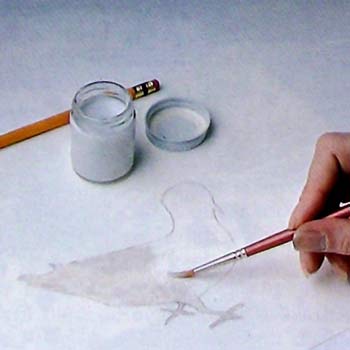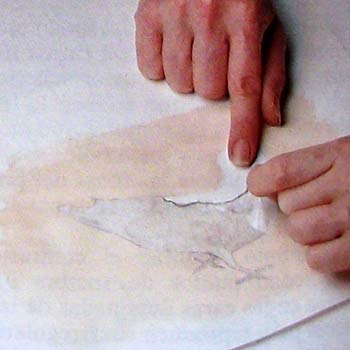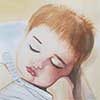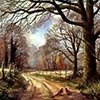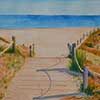One of the most interesting and successful watercolor techniques is to use masking fluid or Drawing gum to protect lighter areas. It is a liquid used to paint some areas to reserve and protect the watercolor paper. It is made of latex with some shade to distinguish it well from paper and to be visible. It is sold in jars and dries quickly, forming a waterproof film to protect the covered area while the rest of the paper is painted.
It is very useful as it helps us with the profiling of small and complex shapes that should not be painted when we make a wash.
In the watercolor technique, you have to learn how to reserve the whites colors in advance and then apply the paint around it. For example, a seagull in the sky is a small shape and needs to be protected first before painting that sky. Thus we reserve white and the sky will not have variations in tone, but will be a single brushstroke.
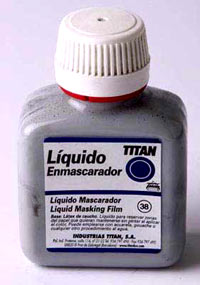
How to use the protective liquid for watercolor
- With a clean brush, with the necessary size, we paint with this liquid on the paper creating the exact shape that we want to mask.
- Let it dry well.
- Then, you can paint with the watercolors being careful not to rub the masking too much.
- Once everything is dry, scratch it with the fingertip and remove the masking liquid from the reserved area.
Pictorial themes for watercolors with the use of masking liquid
It works very well when we want to paint straight, clean and very precise profiles. Defined shapes such as buildings, ship sails, grasses, figures with targets, or any contrasting profile of the background. And above all, it can serve us very well when we want to paint something of light color on a dark background, night scenes, still lifes or similar things with clear profiles and light color.
Example in pictures
Step 1: The silhouettes of what we are going to mask are prepared and the masking liquid is put on.
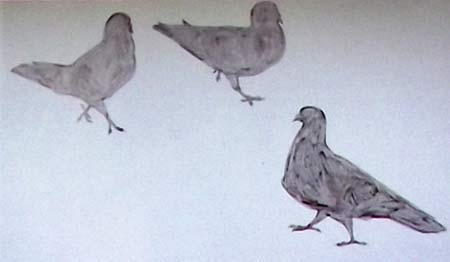
Step 2: The background is painted normally, being careful not to scratch the masking.
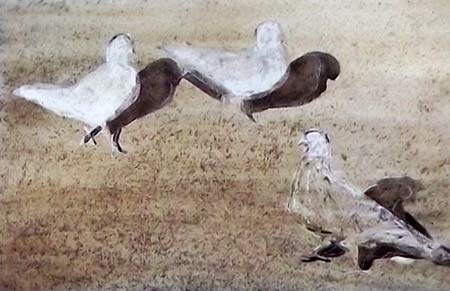
Step 3: The mask is removed from the watercolor paper.
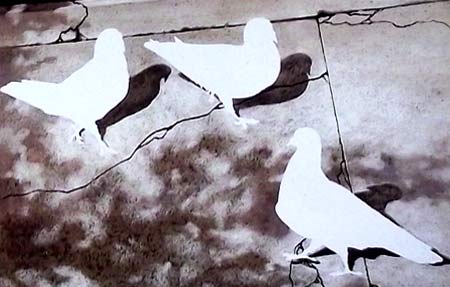
Step 4: The final details are painted on the pigeons.
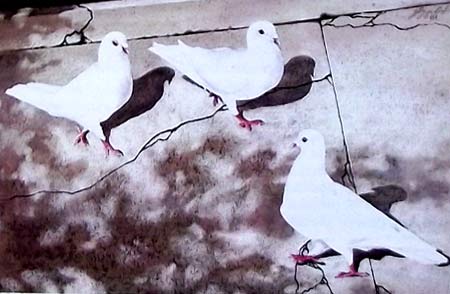
However, when we want soft shapes, such as clouds, wave crests, or any blur, it is better to use the brushes to achieve a more natural and integrated effect.
Cleaning the brush: with soap and water and immediately after use, because if it dries, the rubber spoils the brush a lot. If any of the dried liquid remains on the brush, it could be cleaned with petroleum or other light fuel.
I advise watching Terry Harrison’s videos on how to use the masking liquid technique, in the entry:
Video Tutorials for Painting Landscapes in Watercolor – by Terry Harrison

